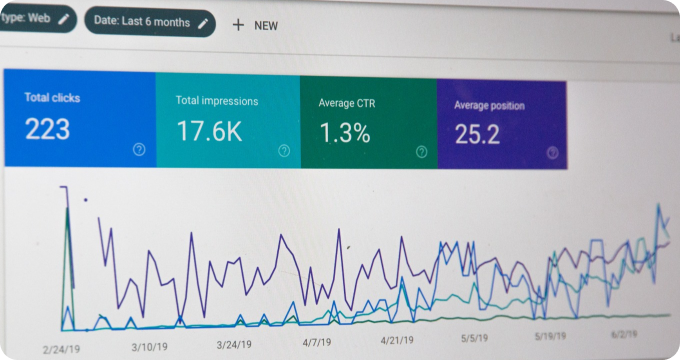The Future of Applicant Tracking Systems for Small Businesses: Predictions and Trends
- November 25, 2023
- 2 minutes
The riveting saga of technological advancement is continuously redefining the landscape of human resources. As small businesses grapple with the challenges of acquiring the right talent, a technological knight in shining armor emerges from the heap of solutions - the Applicant Tracking System (ATS). This blog aims to delve deeper into the future of ATS for small businesses, articulating emerging trends and speculations that are reshaping this domain.
ATS is an application that streamlines the recruitment process by automating job postings, applicant responses, candidate screening, interview scheduling, and analytics - creating a central repository for all recruitment-related activities. In the context of a small business, where resources may be limited, the role of ATS becomes pivotal in ensuring an efficient and cost-effective recruitment process.
In recent years, we've seen a paradigm shift in the capabilities and functionalities of ATS, guided by underlying trends driven by technological evolution, changing market dynamics, and evolving user behaviour. Let's explore some of these trends and their implications for the future of ATS in small businesses.
- Artificial Intelligence (AI) and Machine Learning (ML) seem poised to take center stage in the narrative of ATS evolution. AI and ML can analyze large datasets to find patterns, a valuable trait in predicting potential top-performers among job applicants. Algorithms could analyze parameters such as experience, skill sets, education, and past job performance to predict future success. However, while this may have the potential to streamline the hiring process, it also presents issues related to fairness and bias. It's essential to ensure these algorithms don't inadvertently favor certain applicant demographics over others.
- Another trend is the integration of ATS with other HR tools, such as Performance Management Systems, Learning Management Systems, and Employee Engagement tools. This integrated approach can provide a more holistic perspective of the employee lifecycle, right from recruitment to exit. However, it's worth noting that while the integration of systems provides a comprehensive view, it also increases complexity, requiring sophisticated management of data interfaces and potential security threats.
- User experience (UX) is becoming increasingly important in ATS development. Traditionally, ATS has been viewed as a tool for HR professionals. Today, however, there is a growing emphasis on creating a positive experience for job applicants. A Gallup study found that a poor application process can damage a brand's reputation, even leading potential customers to stop patronizing the company. Hence, future ATS will likely focus more on enhancing UX to attract top talent and maintain their brand image.
- Predictive analytics, powered by AI and ML, is another emerging trend in ATS. This technology can analyze historical data to foresee future outcomes, aiding in strategic decision making. For instance, it can predict the time-to-fill for specific roles or identify the attributes of successful hires. However, while predictive analytics can provide powerful insights, it's crucial to remember that these predictions are only as good as the data they're based on. Inaccurate or biased data can result in misleading predictions, causing more harm than good.
In conclusion, the future of ATS for small businesses seems to be heralding a new era marked by AI and ML, system integration, enhanced UX, and predictive analytics. However, while these trends promise improved efficiencies and insights, they are not without challenges. It's critical for small businesses to approach these trends with a balanced perspective, evaluating potential benefits against inherent risks to adopt the best approach for their unique circumstances.
As we stand at the precipice of this technological revolution, it is essential to remember that while ATS can offer powerful tools for recruitment, it should serve as a complement to, not a replacement for, human judgment. Because ultimately, it is the human element that defines a company's culture and determines its success.
The future is not something we enter, it is something we create. As we forge ahead into the era of AI-fueled ATS, we must remember to create a future that values efficiency and insight, but above all, values humanity.
Learn More
Unleash the full potential of your small business by diving deeper into our enlightening blog posts about applicant tracking systems. For an unbiased, comprehensive view, the reader is encouraged to explore our meticulously curated rankings of the Best Applicant Tracking Systems for Small Businesses.
Popular Posts
-
 Applicant Tracking Systems for Small Businesses Industry Report: Key Findings and Insights
Applicant Tracking Systems for Small Businesses Industry Report: Key Findings and Insights
-
 Debunking 10 Myths About Applicant Tracking Systems for Small Businesses
Debunking 10 Myths About Applicant Tracking Systems for Small Businesses
-
 Ask These Questions to an Applicant Tracking System Provider to Choose the Right Solution for Your Small Business
Ask These Questions to an Applicant Tracking System Provider to Choose the Right Solution for Your Small Business
-
 How to Hire the Best Talent: A Guide to Applicant Tracking Systems for Small Businesses
How to Hire the Best Talent: A Guide to Applicant Tracking Systems for Small Businesses
-
 10 Things I Wish I'd Known About Applicant Tracking Systems for Small Businesses Before Implementing One
10 Things I Wish I'd Known About Applicant Tracking Systems for Small Businesses Before Implementing One






